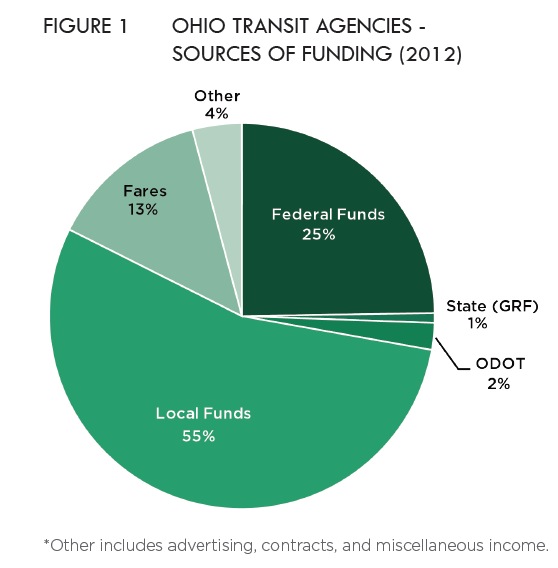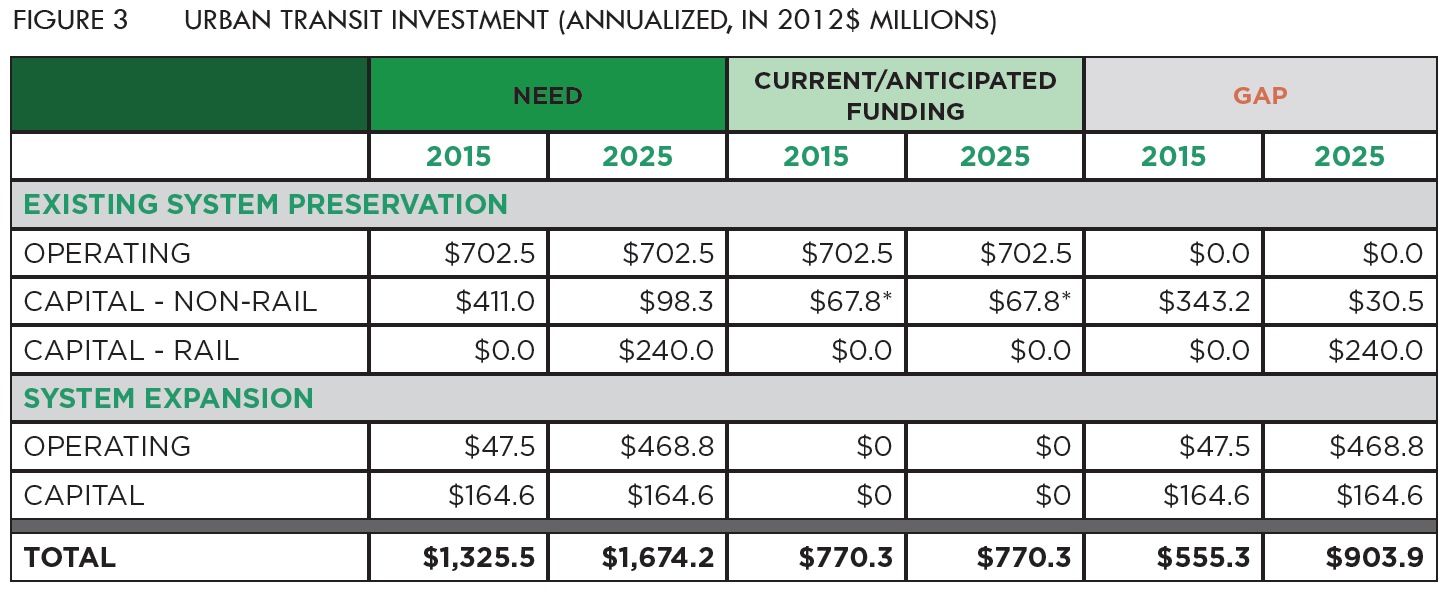OHIO DEPARTMENT OF TRANSPORTATION
SUMMARY OF FINDINGS
 The Ohio Statewide Transit Needs Study was tasked with quantifying Ohio’s transit needs, as well as recommending programmatic and policy initiatives to strengthen the statewide transit system.
The Ohio Statewide Transit Needs Study was tasked with quantifying Ohio’s transit needs, as well as recommending programmatic and policy initiatives to strengthen the statewide transit system.
Ohio has a strong and productive transit network, with 61 public transit agencies that carry over 115 million trips a year – the 14th highest transit ridership of any state in the U.S. in 2013. Statewide, transit agencies in Ohio spend roughly $900 million annually providing service. Over half of the funding is raised locally though sales, business, property, and earnings taxes. A quarter of the funding comes from the federal government. The remaining 20% is raised through passenger fares, service contracts, funds provided by the State of Ohio (ODOT and the state general fund), and other miscellaneous income.
The need and demand for transit is changing in response to both underlying demographic changes in Ohio’s population and to cultural preferences. The evidence for these changes is clear through socio-economic and demographic data analyzed as part of this study, but also by state policy centers, such as the Greater Ohio Policy Center and the Scripps Gerontology Center at the University of Miami, and national research organizations, including the Urban Land Institute and the Brookings Institute. The Statewide Transit Needs Study also collected its own data, including surveys with transit riders, interviews with stakeholders and surveys with the members of the general public. Key findings from this collective analysis include:
Changing cultural preferences for transportation are evident from both younger (millennials) and older generations (baby boomers). A large portion of these populations express a desire to live in communities that are bikeable, walkable and have transit.
- Successful cities in the United States are investing in public transportation services and systems to respond to these preferences as part of their workforce retention and attraction strategies. In the Midwest, these cities include Minneapolis, Grand Rapids, Kansas City, and Madison.
Ohio’s population is growing more slowly than many other states. In places where Ohio is adding people, the growth is largely attributable to foreign born populations. Most of these individuals are moving to urban areas.
- Foreign born populations tend to be experienced public transportation riders. Many expect and want public transportation services if they are going to make Ohio their permanent home.
Ohioans are getting older and poorer, especially in rural areas.
- Seniors and low income individuals will rely more on public transportation, putting more pressure on transit systems to meet this growing demand.
Health and human services are increasingly focused on serving people in their communities and encouraging people to stay in their homes.
- Implementing these programs requires a corresponding investment in transportation; this can be coordinated with public transportation services to reduce duplication of service and effort.
Ohioans travel across municipal and county boundaries to get to work but also for other reasons, such as shopping, school, and to access health care.
- These regional patterns include a need to travel between cities and suburbs as well as between rural areas.
- Ohio’s transit agencies are largely organized around municipal and county boundaries. As a result, they are not always able to take people where they want and need to go.
Download full version (PDF): Ohio Statewide Transit Needs Study
About the Ohio Department of Transportation
www.dot.state.oh.us
Mission: To provide easy movement of people and goods from place to place, we will: Take care of what we have; Make our system work better; Improve safety; Enhance capacity. Vision: A long-term, reliable, professional and highly productive organization.
Tags: Baby Boomers, Millennials, ODOT, OH, Ohio, Ohio Department of Transportation, Walkability







 RSS Feed
RSS Feed